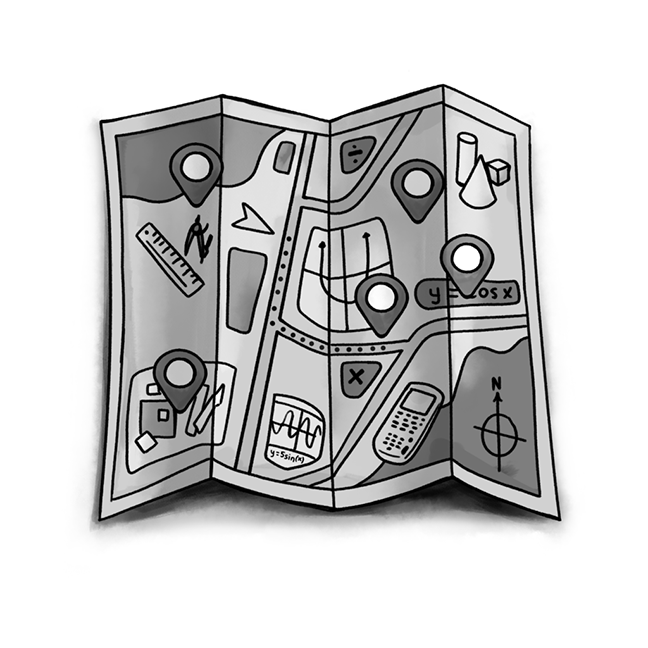April Bain, Los Angeles, CA, april.bain@gmail.com
I have been teaching high school students with the CPM curriculum since 2010. Through quite a bit of trial and error, I have established a few strategies that work for my inner-city, Los Angeles-based classroom. However, there are still a few areas where I continue to struggle: student learning from the homework, regularly conducting a closure activity, effectively using the Learning Logs, and supporting my students with capturing, synthesizing, and referencing their learnings from the classwork. I would like to share an easy-to-implement strategy I have been trying this year to tackle the above-mentioned obstacles.
This summer I had the privilege of being invited to work as a researcher with the CPM Teaching Research Corps (I highly recommend it to any teacher looking to collaborate with other innovative teachers.) My team decided to investigate how providing opportunities for making revisions in class would improve student learning and promote a growth mindset. While each of us implemented a slightly different strategy around revision, my particular strategy focused on students writing about mathematics for the purpose of communicating and capturing their own ideas and discoveries.
I chose a focus on writing because over the years I have noticed that my student population wrestles with creating written explanations of their mathematical thinking. This was evident during presentations, group posters, and on test day but it was most evident in my AP Statistics class, which relies heavily on written explanations of inference. These students were mostly seniors and I was alarmed that we were sending them off to college and careers without having mastered the ability to communicate their ideas through writing.
This is how my strategy looked in practice: students individually spent the final ten minutes of each lesson one of three ways: writing a response to a Learning Log, writing a response to a prompt I have selected, and/or revising a previously written response. My only requirement was that they were writing for the entire time. My incentive was that students were allowed one submission per Learning Log to be graded on an Effective Communication Writing Rubric and then be allowed to use it on any future assessment. The four-point rubric categories were as follows: addresses the topic, organization, supporting details, mechanics, and communication. To create time for this strategy, I essentially replaced my homework check/review time at the beginning of a lesson with this writing time at the end. My rationale was that students can check their homework answers online and if they are stuck on a particular problem, they can seek out tutoring or assistance outside of class time. Furthermore, I have not experienced high student engagement with any homework check strategy I have tried.
I believed that four critical outcomes would occur when students were given the opportunity to re-read and revise their writing. First, if they have a difficult time making sense of their own writing, they would learn the importance of proofreading any type of writing before submission. Second, by reading what they knew of a previously learned concept (for example: solving a system of equations) on the first lesson, versus their knowledge after a few chapters of practice, they would realize how much learning growth they have experienced. Third, it would give them an opportunity to rely on their own notes and thoughts for studying, rather than the book – which is much more reflective of the realities of college and careers. And finally, I believed their overall ability to write in real-time for effective communication would improve, and their performance on all types of writing assessments would improve.
I am still collecting data on the outcomes, but there are a few anecdotal pieces of evidence I would like to share. At the very beginning, the students were resistant to writing in math class, especially the freshman. However, the upperclassman that had taken a CPM math class before immediately appreciated the reflection time at the end of each lesson. I had someone from our administration team come up to me and ask about what I was doing because the students kept saying that they were finally able to put some ideas together at the end of each math lesson – which was one of the previous “negatives” to our task-based, discovery lessons where I always ran out of time for appropriate closure. Secondly, I was able to informally provide feedback on students’ writing as I circulated the room during the writing time and through the rubric. Students had a much better sense of my expectations for their writing when assessments came along and I witnessed an improvement in test scores. Additionally, an unexpected benefit was the chance to “reset” my classroom to prepare for the next class. While the students were writing, I would circulate the room and collect group folders, finish grading classwork or homework, or just set up the materials for the next group. The students were writing and it created a more stable and conducive learning environment to end each lesson.
In short, the daily writing time gave my students a chance to re-read and revise their own written reflections of learning. In a student-centered classroom, it is all about giving students the opportunity to experience the learning themselves. I am looking forward to reviewing the data on how their written communication of mathematical ideas will improve as the school year progresses. If you would like to hear more about this strategy, my lessons learned, and the big impact it is having on student learning, come see my presentation at the CPM Teacher Conference in San Francisco.
